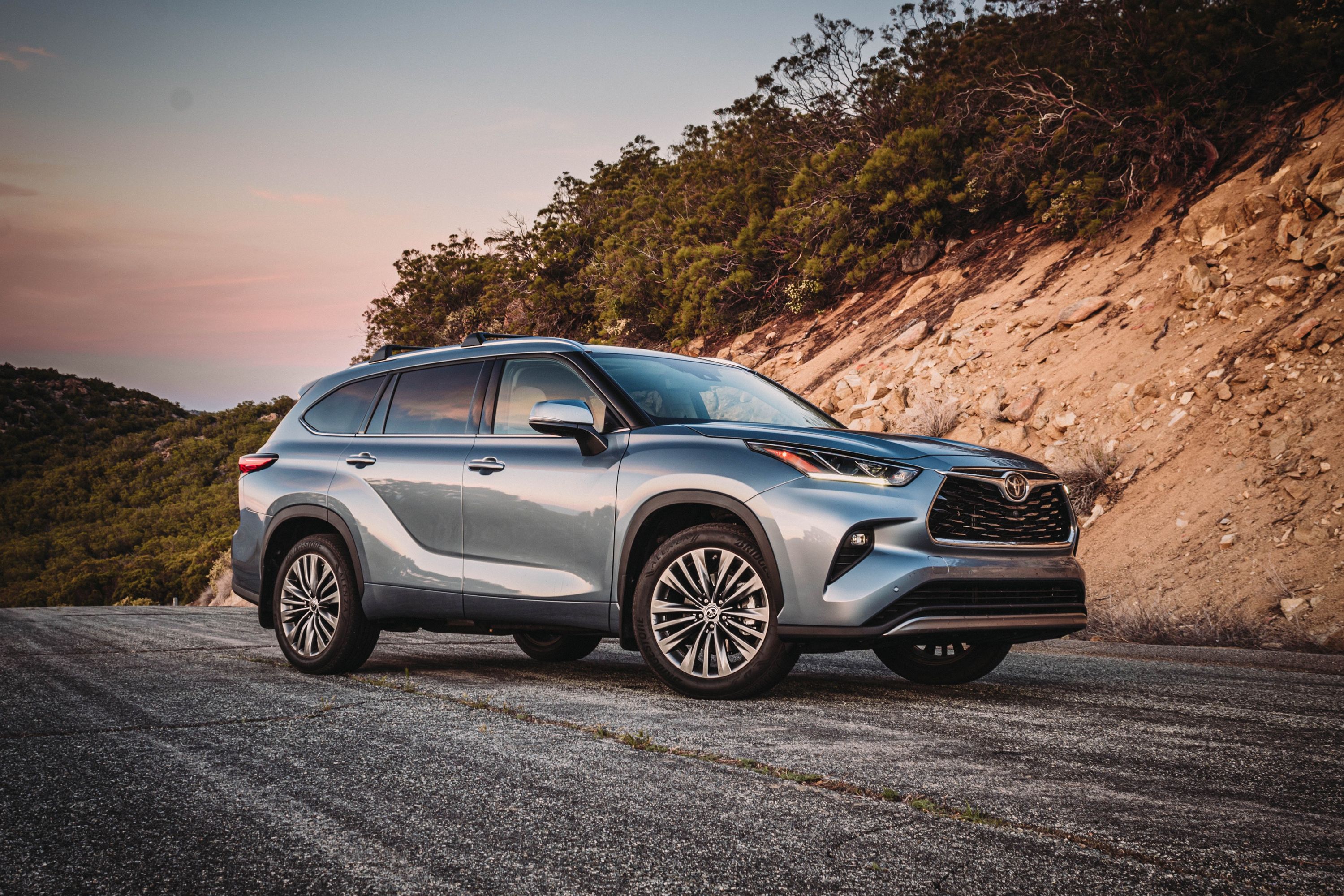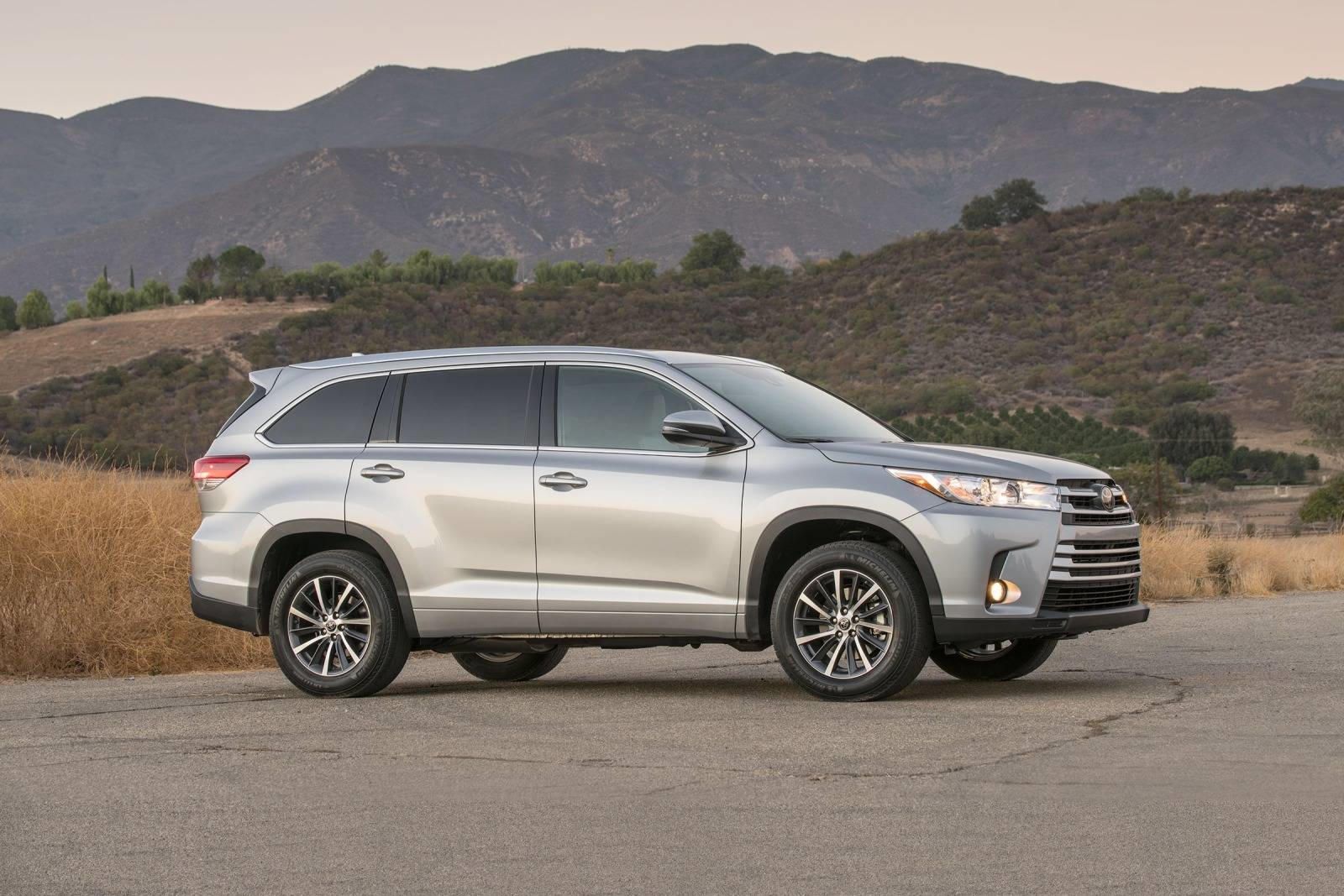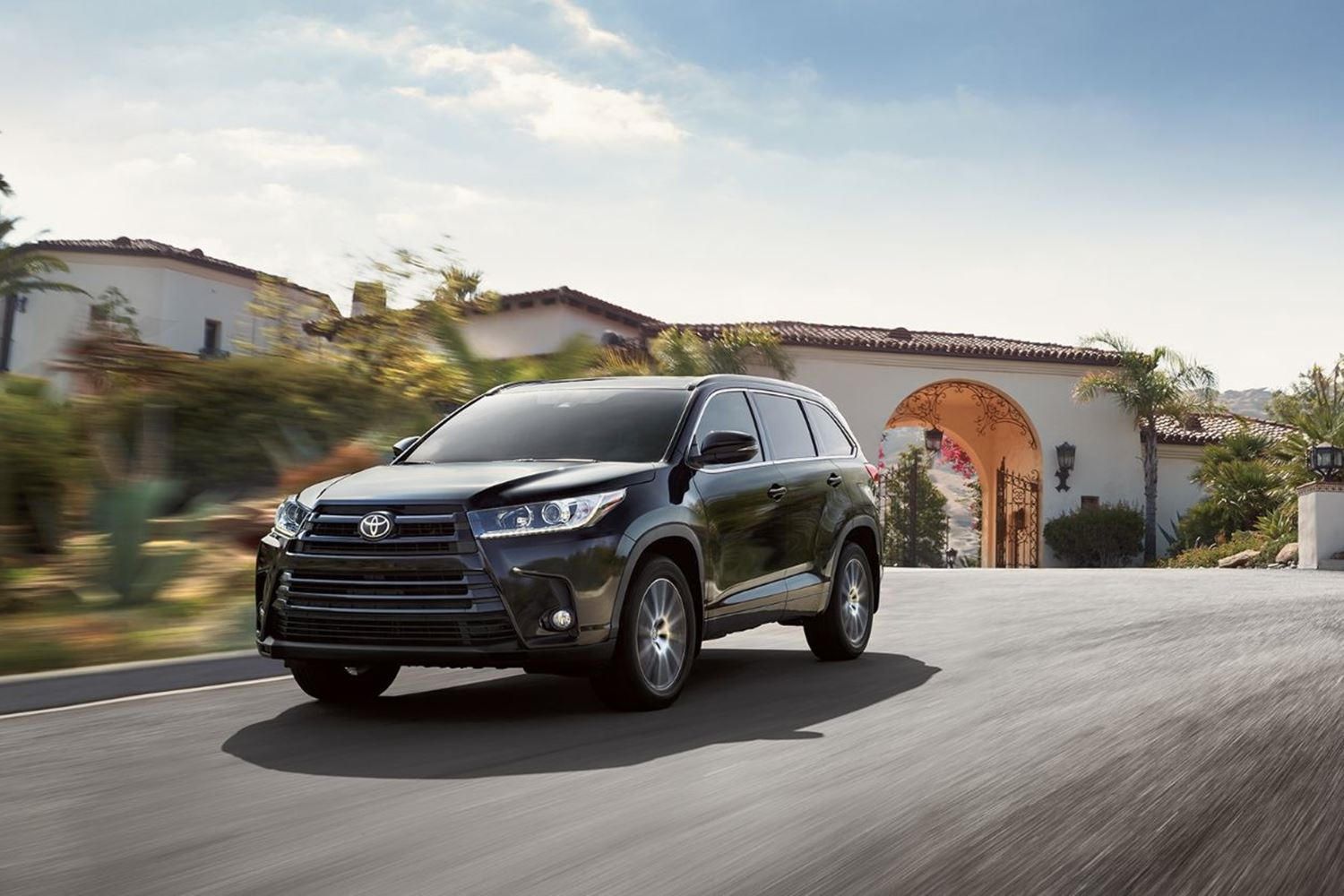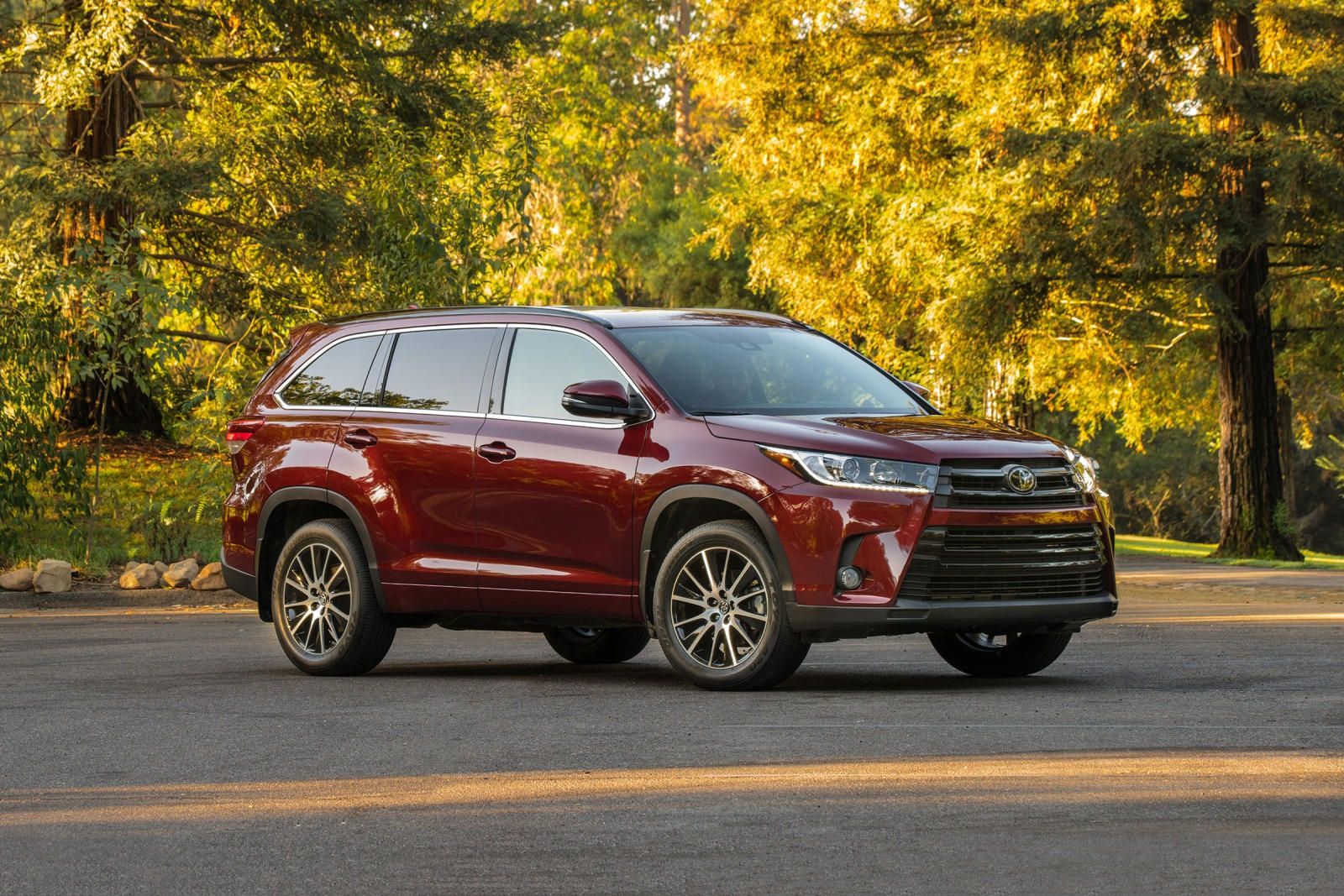Everything you need to know
If you're in the market for a family SUV, the Toyota Highlander should be near the top of your shopping list.
The mid-sized SUV class is an immensely congested and competitive one, so it's testament to just how well-sorted the Toyota Highlander is that we feel it's amongst one of the best offerings you'll find in this class. With an emphasis on comfort and refinement, the Toyota Highlander is very well-suited to longer journeys, the engines are fairly efficient and the well-built and moderately spacious cabin is crammed with an impressive amount of equipment as standard. Of course, no vehicle is perfect, and the Toyota Highlander does lag behind the competition in some areas. For the most part, though, the Toyota Highlander hits the proverbial nail on the head, and we feel anyone who's looking at buying a new mid-sized SUV would be doing themselves a great disservice if they ignored the Toyota Highlander.
Well-built with intuitive-to-operate controls, but rear row and trunk space is average
Seat space in the front and middle rows is also fairly good on the Toyota Highlander.
A family-oriented vehicle needs to have a solid interior, and the Toyota Highlander doesn't disappoint in this area. In terms of fit-and-finish, the Toyota Highlander has very few equals in this class, and overall fit-and-finish also ranks up there with what the best in this segment can offer. Put simply, the Toyota Highlander should easily hold up to the toils of day-to-day abuse over the course of your ownership period. The ergonomics on the Toyota Highlander also impress. Whilst we do admittedly prefer the 8-inch touchscreen system available on all but the most basic versions, both this interface and the smaller 6-inch setup are clear to read, responsive to inputs and overall easy to navigate – if perhaps positioned a bit too far away from the driver's seat. All the other main controls, though, are much easier to reach, on top of being well-laid out and intuitive to operate, and the main dashboard dials are also logically displayed and easy to read at a glance when driving. Seat space in the front and middle rows is also fairly good on the Toyota Highlander. The impressive amounts of head room on offer means six-footers should be able to fit into the car without their heads scraping the roof headlining, and there's also a decent amount of leg room. However, there are some issues: the center seats in the middle and rear rows aren't especially wide, so aren't brilliantly suited for adults, and the rear seats also don't offer that much leg room even with the middle row positioned as far forward as possible. That said, head room in the back is surprisingly good.
The Toyota Highlander has lots of good-sized storage cubbies.
Cargo space on the Toyota Highlander is okay, if not ground-breaking. Though the trunk itself has a large opening, a boxy shape and no load lip (two handy features if you'll regularly be ferrying about larger and heavier items), the 13.8 cubic feet with all the seats in place is about average for this class. Admittedly, though, the Toyota Highlander closes the gap to the class-leaders when you fold down 60:40-split seat backs for the rear row (42.3 cubic feet) and middle row (a whopping 83.7 cubic feet), the seat backs do fold away completely flat and the rear window does flip upwards on all bar the most basic Toyota Highlander models if you only need to remove or deposit smaller items into the trunk. Plus, bar a slightly shallow glovebox, the Toyota Highlander has lots of good-sized storage cubbies, with our personal highlights being the tray that runs along most of the center console and the impressively deep spot under the center armrest. Worth pointing out is the fact not all Toyota Highlander variants can accommodate eight people. Though admittedly most Toyota Highlander models come with an eight-seater configuration, the hybrid model is only available as a seven-seater as the battery packs are located where the center seat in the middle row would normally be.
Not riveting to drive, but comfortable and manoeuvrable enough for day-to-day driving
Even over rougher road surfaces, the Toyota Highlander remains a controlled and cossetting car.
If you crave engaging handling from your three-row SUV, then the Toyota Highlander will end up disappointing you. Admittedly, most vehicles in this segment aren't quote-on-quote fun to drive, but – if such an aspect makes up a crucial part of your car-buying decision – you'll be better off with a Mazda CX-9 or Ford Edge. Likely a more important aspect to zero-in on when looking at a family-oriented car are features like ride comfort and manoeuvrability, which are two areas where the Toyota Highlander fares rather well. Even over rougher road surfaces, the Toyota Highlander remains a controlled and cossetting car, and the combination of responsive steering and very good overall visibility (in spite of the slight blind spots at the base of the front pillars) means the car is easy to place where you want it on the road and in tighter spots in built-up areas.
The Toyota Highlander ranks up there as one of the best three-row SUVs on the market right now in terms of highway cruising ability.
The refinement levels are also very good on the Toyota Highlander, with very little wind noise or tire roar to contend with even when using electric-only power on the hybrid version. As a result, the Toyota Highlander ranks up there as one of the best three-row SUVs on the market right now in terms of highway cruising ability. It's not all plain sailing with the Toyota Highlander, however – though we will concede most of the following points don't have a huge impact on the car's outright usability. For instance, the softer ride setup does mean there's a bit of body lean to contend with when cornering, and buyers who need an SUV of this ilk with good off-road capabilities will be better suited by a Jeep Grand Cherokee.
If you can afford it, the six-cylinder engine’s the one to go for
The most divisive engine in the entire range: a 2.7-liter four-cylinder gasoline unit.
Only available on the most basic version of the Toyota Highlander is perhaps the most divisive engine in the entire range: a 2.7-liter four-cylinder gasoline unit. Whilst it's okay in isolation, this smaller engine does start to show some notable flaws upon closer inspection. For starts, the outputs aren't brilliant for a vehicle in this segment. Though the 185-hp and 184 lb-ft outputs aren't too bad, they aren't amazing either, and you will need to work the engine hard in order to reach higher speeds. Furthermore, the four-cylinder isn't brilliantly refined either (especially at higher revs), and we don't feel it suits the more relaxed qualities of the Toyota Highlander's driving characteristics – though, to this engine's credit, 20mpg city/24mpg highway economy figures aren't too bad by class standards. If your budget stretches far enough, we're more inclined to suggest the 3.5-liter six-cylinder gasoline engine. Though it is admittedly a $1,655 optional extra on the entry-level Toyota Highlander (all other variants come with it as standard), we feel the extra refinement and the added usability as a result of the 295-hp and 265 lb-ft of torque help go some way to justifying the expenditure. Even more amazingly, this larger engine is even more efficient than the 2.7-liter, courtesy of the claimed 21mpg city/27mpg highway and 20mpg city/26mpg highway for front-wheel drive and all-wheel drive versions respectively – though, unless you have a massive annual mileage or plan on owning the car for a substantial period of time, the fuel savings won't offset the price of the six-cylinder engine.
There's also a hybrid version that uses electric motors and a reworked version of the aforementioned six-cylinder engine to provide power.
There's also a hybrid version that uses electric motors and a reworked version of the aforementioned six-cylinder engine to provide power. Its net 306-hp output is more than sufficient for a vehicle of the Toyota Highlander's size and, whilst the net peak torque output of 215 lb-ft isn't amazingly impressive, it is enough for day-to-day use, and the electric motors mean a lot of that pulling power is available from the moment you stomp on the gas pedal. Plus, the fuel economy's also pretty good for three-row SUV, with claims of 30mpg in the city and 28mpg on the highway. However, it's worth pointing out that the electric-only range on the hybrid Toyota Highlander is so short that it's an almost useless feature in day-to-day driving, and the rather high pricing of this variant means you'll likely never recoup the money you spent on the hybrid at the gas pump. All Toyota Highlander models come with an automatic transmission, though which one you get depends on what engine you pick. The hybrid, for instance, is only available with a continuously variable transmission, or CVT, whereas the four-cylinder and six-cylinder non-hybrid models are fitted with a six-speed and an eight-speed setup respectively. Overall, they're rather good transmissions that suit the characters of their respective engines well, though – if we have to pick a preferred unit – the slick-shifting and smooth eight-speed automatic is our pick of the lot.
Lots of safety gear as standard
Regardless of which Toyota Highlander you go for, your car will come with a sizeable amount of equipment as standard.
Regardless of which Toyota Highlander you go for, your car will come with a sizeable amount of equipment as standard. Even the most basic 'LE'-spec cars that start at $30,630 come with 18-inch alloy wheels, adaptive cruise control, lane departure warning, emergency autonomous braking at sub-30mph speeds, a reversing camera and dual-zone climate control. All in all, it's quite impressive – and especially as a lot of the standard safety gear on the Toyota Highlander can only be specified as optional extras on a majority of rival cars. Buyers who'd prefer more equipment will likely prefer the 'LE Plus' trim, which we feel is definitely worth considering if your budget stretches that far. At $35,060, it's admittedly an expensive upgrade, but this new trim does introduce an 8-inch touchscreen with built-in navigation and satellite radio, three-zone climate control and the extra convenience of the flip-up rear window. Factor in the optional 3.5-liter six-cylinder engine that'll set you back $1,655, and you'll have a very nicely specified Toyota Highlander – even though we'd prefer it if you could replace the synthetic leather upholstery with the legitimate material that's available as standard from the $38,520 'XLE' trim upwards.
On top of scoring the full five stars in its most recent NHTSA crash test, the Toyota Highlander is also a 'Top Pick +' of the IIHS – putting the car on par with some of the safest vehicles in this segment.
Other specs are available for the Toyota Highlander. On top of the aforementioned 'XLE', the range extends to $39,690 'SE' and the $43,140 'Limited'. Furthermore, a whole array of hybrid versions that add another $5,000 to the sticker price (on top of a range-topping, $47,880 'Hybrid Limited Platinum' trim) can be specified. However, as these raise the price up to considerable levels, we don't feel they're worth considering unless your budget stretches far enough and you really need the extra features they offer. For most buyers, a Toyota Highlander in 'LE Plus' trim will do them fine, with the 'XLE' being the highest we'd suggest if it's within your price range. As we discussed earlier, safety is a strong part of the Toyota Highlander's appeal, so it's no surprise to learn it performs well in crash tests. On top of scoring the full five stars in its most recent NHTSA crash test, the Toyota Highlander is also a 'Top Pick +' of the IIHS – putting the car on par with some of the safest vehicles in this segment, such as the Honda Pilot. Reliability should also be a strong point for the Toyota Highlander. After all, the vehicle has had a pretty good reliability record, and all variants come with decent-by-class-standards three-years/36,000-miles bumper-to-bumper and five-years/60,000-miles powertrain warranties to fall back on. Hybrid variants of the Toyota Highlander also get an eight-years/100,000-miles warranty that covers all the additional components that make up the hybrid part of the powertrain.
Conclusion
In summary, the Toyota Highlander's a rather well-rounded three-row SUV. Even in a class as hotly contested by some very talented rivals, the Toyota Highlander stands out as a genuinely very capable family-oriented SUV that we're sure many buyers will feel more than satisfied with over their ownership periods. For sure, the Toyota Highlander isn't an imperfect car. For instance, we'd have preferred it to be a bit more accommodating in the third row, some rivals can swallow up more luggage over a variety of seating configurations and buyers who opt for the base model will have to make do with an above-engine four-cylinder gasoline engine. Thankfully, the Toyota Highlander claws back that lost ground by being a comfortable, refined, well-equipped and good value family SUV that also doesn't lag behind too much in the aforementioned areas where the competition has the upper hand. Overall, if you're in the market for such a car, the Toyota Highlander is a vehicle we feel you should definitely be considering.




